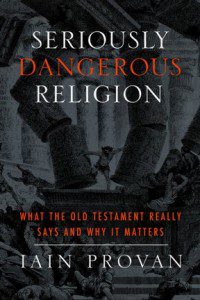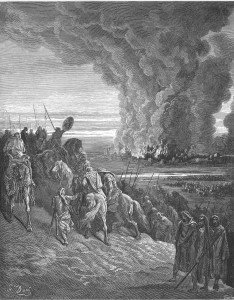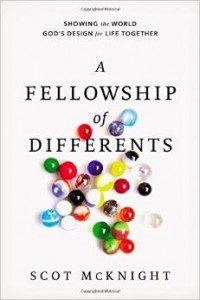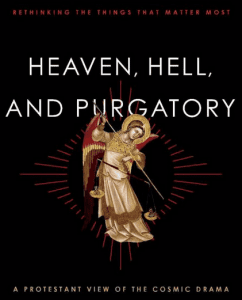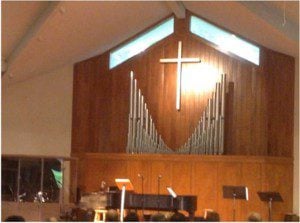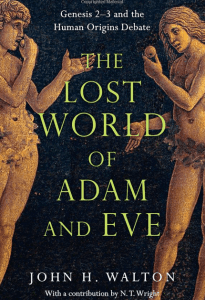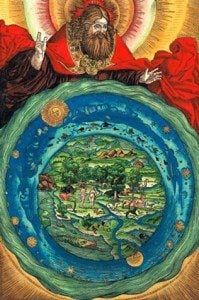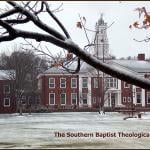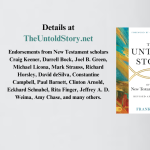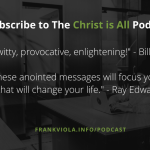 The next couple of chapters in John Polkinghorne’s little book The God of Hope and the End of the World address the questions of personhood, the soul, and new creation. Christianity hope is founded in God and his work in the world through Jesus, the Messiah of God; it is founded in the reality of resurrection – individual, personal, physical resurrection. But resurrection and the age to come lead to questions of their own.
The next couple of chapters in John Polkinghorne’s little book The God of Hope and the End of the World address the questions of personhood, the soul, and new creation. Christianity hope is founded in God and his work in the world through Jesus, the Messiah of God; it is founded in the reality of resurrection – individual, personal, physical resurrection. But resurrection and the age to come lead to questions of their own.
What is the essence of a human person?
What is the soul? What is preserved or resurrected?
What will new creation be like?
New creation can’t simply be more of the same (subject to decay and the never-ending increase in entropy). But it also doesn’t seem likely that it is simply beautiful scenery, peace, and singing alleluia in timeless eternity. In the new creation we continue to live, learn, and experience.
What is the soul? Polkinghorne asks “What is it that will connect our present life to our future life in that new world whose character will be so different?” The human psyche is attached to a material body in an inseparable fashion. Psychology and neuroscience are making this ever clearer. A simple dualistic view of body and soul simply doesn’t seem appropriate. We are better described as animated bodies than incarnated souls. Polkinghorne ruminates on the nature of the soul.
Whatever the human soul may be, it is surely what expresses and carries the continuity of living personhood. We already face within this life the problem of what that entity might be. The soul must be the ‘real me’ that links the boy of childhood to the ageing academic of later life. If that carrier of continuity is not a separate spiritual component, what else could it be? It is certainly not merely material. … What does appear to be the carrier of continuity is the immensely complex ‘information bearing pattern ‘ in which that matter is organised. This pattern is not static; it is modified as we acquire new experiences, insights and memories, in accordance with the dynamic of our living history. It is this information-bearing pattern that is the soul. (p. 105-106)
This information bearing pattern requires some kind of material body, but it is not simply material. In this way of thinking, the preservation of the human soul depends on God’s faithfulness and re-embodiment in resurrection is an act of God. Simply put, immortality is not an intrinsic feature of human existence, body or soul. The connection between a material body and the ‘real me’ is complete. Death is a real end. This means that immortality is (and always was) a divine gift. God is in control and death need not be the ultimate end. God can, and in Christian belief will, re-embody the “information bearing pattern’ that constitutes the human ‘soul.’ Polkinghorne goes on:
In other words, there is indeed the Christian hope of a destiny beyond death, but it resides not in the presumed immortality of a spiritual soul, but in the divinely guaranteed eschatological sequence of death and resurrection. Only a hope conceived of in this way can do full justice to human psychosomatic unity, and hence to the indispensability of some for of re-embodiement for a truly human future existence. The only ground for this hope – and the sufficient ground for this hope, as we have already emphasised – lies in the faithfulness of the Creator, in the unrelenting divine love for all creatures.
Although the discussion thus far is focused on individuals, Polkinghorne suggests that there is a significant relational and collective dimension to the ‘information bearing patterns’ (souls) that comprise the individuals. Resurrection will involve a perfected incorporation of believers into the ‘body of Christ,’ the church, imperfect and yet so necessary even in this life. Individuals are resurrected into community and relationships intact, healed, and continuing.
What kind of world will the resurrected re-embodied soul inhabit? The current world is the kind of world God purposed. The ongoing development and unfolding history is part of his plan. This includes natural history in the development of the universe and the diversity of life and and it includes the unfolding of human history. This is a world of transience.
The age to come, new creation, must involve a real discontinuity and have a fundamentally different character. From our current perspective we simply cannot know how this will work and must take it on trust. Although the current world takes the form it does as part of God’s plan, Polkinghorne notes “there is no reason to suppose that the Creator can not bring into being a new creation of a different character when it is appropriate to the divine purpose to do so.” (p. 114) He looks to scripture for some hints as to the form the new creation will take.
Sacramental. “The new creation will be wholly sacramental, suffused with the presence of the life of God.” (p. 115) Paul talks about resurrection in 1 Corinthians 15:20-28 concluding that the unfolding of events is “so that God may be all in all.” Revelation 21 provides the same kind of image for the new heaven and new earth.
I did not see a temple in the city, because the Lord God Almighty and the Lamb are its temple. The city does not need the sun or the moon to shine on it, for the glory of God gives it light, and the Lamb is its lamp. v. 22-23
Inconceivable. As a physicist by training and early career, Polkinghorne (theoretical physicist, professor of mathematical physics at Cambridge) takes his thoughts in ways that don’t occur to most Christians. Eternity and eternal life present something of a conundrum. The laws of nature in the new heavens and new earth will not be exactly the same, making it hard to imagine. Polkinghorne continues:
Yet it seems a coherent hope to believe that the laws of its nature will be perfectly adapted to the everlasting life of that world where ‘Death will be no more; mourning and crying and pain will be no more,for the first things have passed away’ (Revelation 21:4), just as the laws of nature of this world are perfectly adapted to the character of its freely evolving process, through which the old creation has made itself. (p. 115-116)
There will be discontinuity within continuity. There is continuity as the new creation is a ‘redeemed transform of the former’ and discontinuity in the nature of the matter and laws adapted to the eternal imperishable. Paul tells is that ‘flesh and blood cannot inherit the kingdom of God, nor does the perishable inherit the imperishable.’ (1 Cor 15:50) This is a mystery, but it must be.
Polkinghorne points out that God’s total creative intent is seen to be intrinsically a two-step process. The original good creation followed by new heavens and new earth.
Temporal. Time seems an intrinsic part of being and Polkinghorne argues that the new creation will not be a timeless world of eternity. It will contain music – defined by the temporal progression of sound – and is better described by analogy to glorious music than to a beautiful, but static, sculpture. The new creation will continue to be a dynamic reality with an ongoing unfolding fulfillment of God’s plans on a different plane.
Music should indeed be our guiding image, not sculpture. Each one of Bach’s thirty Goldberg variations is perfect in itself and we do not need to opt for just one of them. They present us with change without either repetition or loss. It is the exploration of the endless variations of divine perfection that will constitute the harmony of the heavenly realm. How otherwise could finite beings encounter the Infinite? (p. 120)
We will continue to grow, learn, explore, and experience in the new heavens and the new earth in the presence of God. There is no static final picture presented in the New Testament, and certainly not in Revelation.
In Christian hope we don’t go to heaven when we die, at least that isn’t our ultimate destiny. We enter into a new creation. A bustling city, a glorious concert, an image of serenity.
How would you describe new creation?
What does the future hold?
If you wish to contact me, you may do so at rjs4mail[at]att.net.
If interested you can subscribe to a full text feed of my posts at Musings on Science and Theology.


